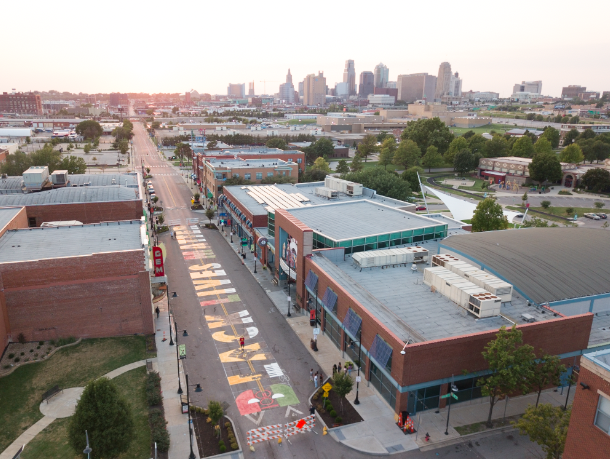
One week ago today, six artists took to the streets alongside more than 1,000 volunteers to paint Black Lives Matter murals on six Kansas City, Missouri, streets. Organizers say the KC Art on the Block project was the largest of its kind.
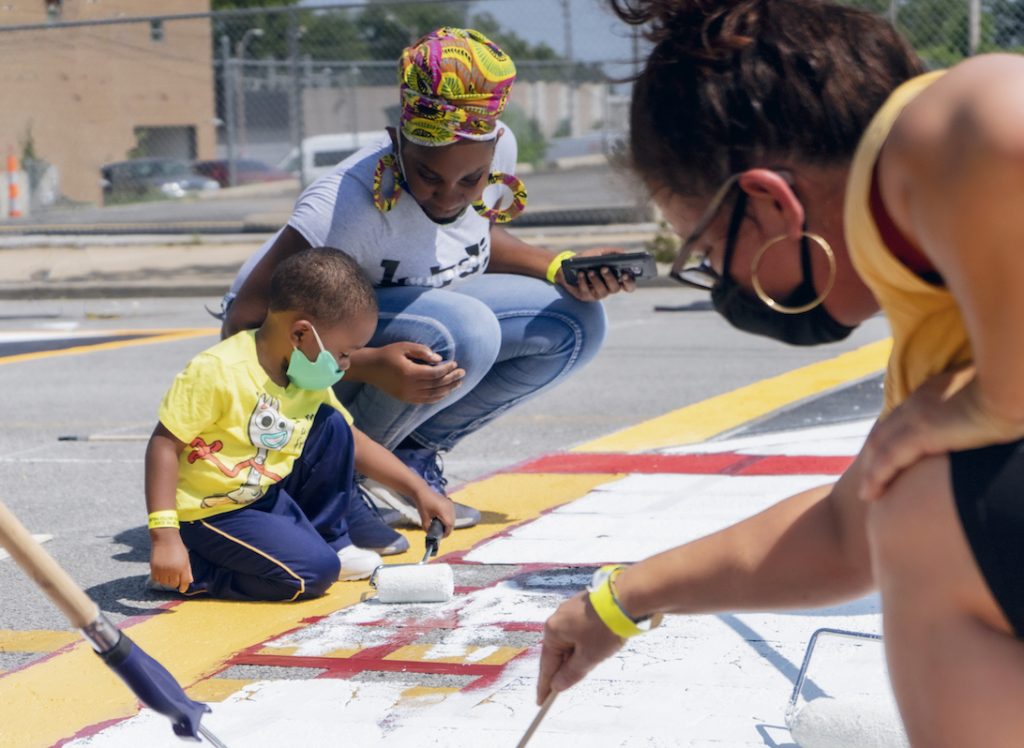
With 1,200+ gallons of paint handy, teams got together to hand-paint the murals last weekend, which now stretch across 2,000 feet of pavement. The six Black artists each designed their murals for the project—which feature “Black Lives Matter” in block letters with varying themes.
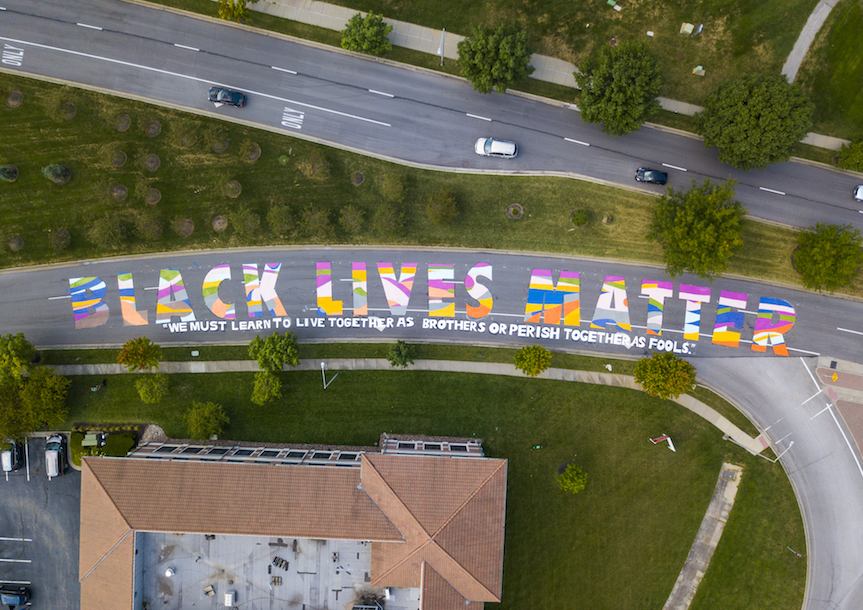
After a marathon day of painting in unseasonably hot weather, we caught up with the artists to find out their thoughts on what the civic-minded endeavor meant to them.
What was the best part about last weekend?
“It was the camaraderie on display, how hard everyone worked despite the heat and the message we all stood as one to share a singular message.” — artist Michael Toombs

“The best part for me this weekend would have to be seeing all cultures and colors come to together to support another culture.” — artist Avrion Jackson
“Seeing all the people come out to help paint the mural. There were people willing to donate supplies, money, time, and energy to ensure we were able to finish the project. Everyone from every age and race worked together on both days to meet the deadline. It was very touching.” — artist Vivian Bluett
“The best part? The unity and love that was expressed between every participant. I had four students from my school with me and I remember adults working alongside them—not overpowering them—but working withthem. It was beautiful to watch.” — artist Adrianne Clayton
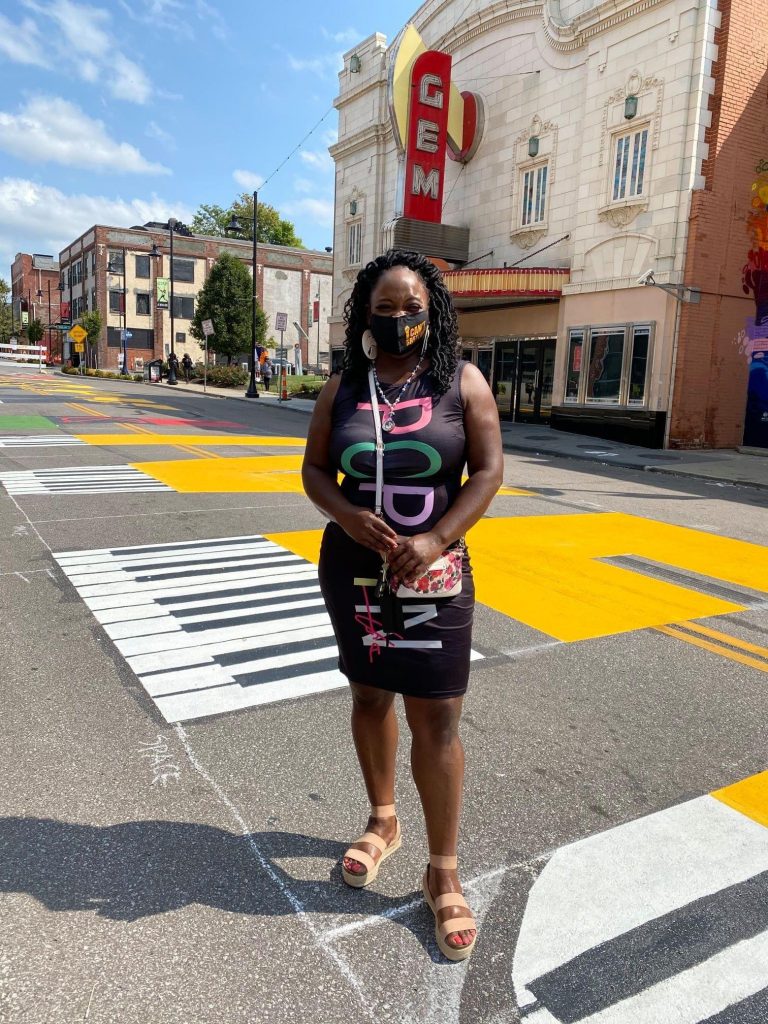
“Seeing everybody come together and work together. It was a huge project—and it was a project that needed a collective of people. At times, I was working and focused on the mural and to look up and see all the people doing what I’m doing—it was a reminder I’m not alone. That was crucial.” — artist Warren Harvey
Any particular takeaways you’d like to share about the experience?
“Remembering that racism is truly taught. There were so many children that came to the location that I was assigned to, and it amazes me how much they comprehend what was going on around them and why they were there.” – artist Avrion Jackson
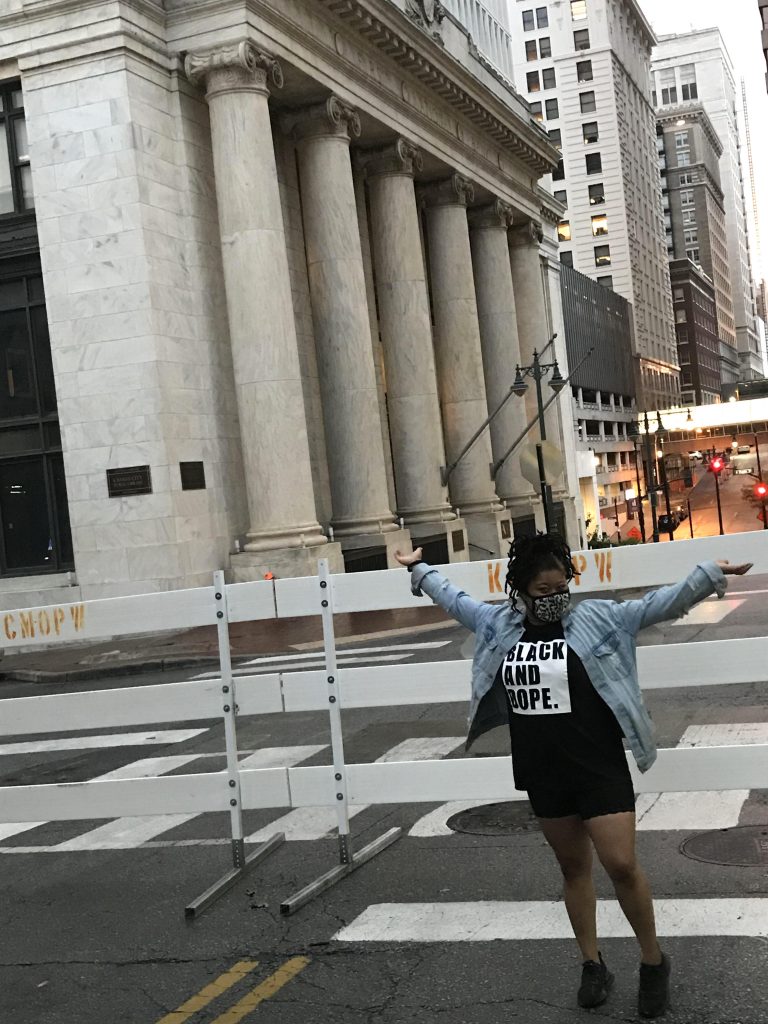
“When you come together, work together, communicate, and believe in a common goal, beautiful things, powerful things can happen. Change can happen. That’s what communities need.” — artist Warren Harvey
“One take away for me personally is anything is possible. I was so nervous that I wouldn’t be able to pull this mural off in the time frame allowed. With the help of family, friends, and community—literally, anything is possible.” — artist Vivian Bluett
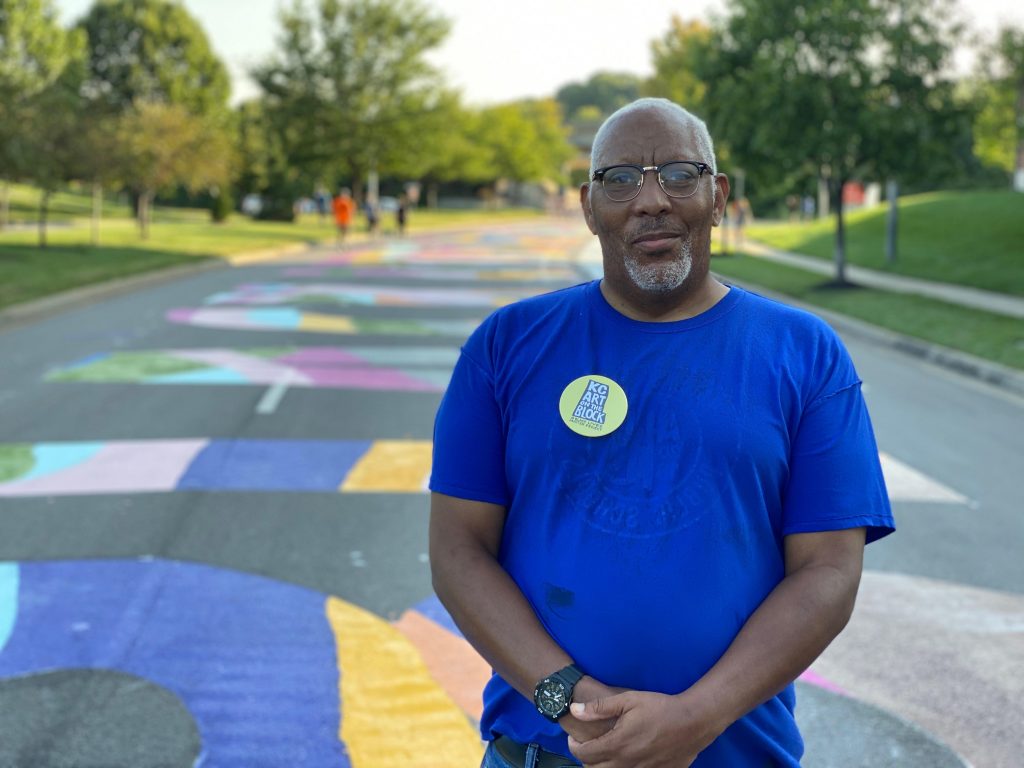
“While working on my mural, I remembered that black absorbs all colors. It is the presence of all colors. All colors can be absorbed into black. It also reflects the beauty of blackness and all the diversity within the Black experience, the vibrancy, creativity, and energy. it is a celebration of blackness, an examination of blackness, a deconstruction of blackness, and a reminder that without Black lives, there are no lives at all.” — artist Harold Smith
“My takeaway is when we have situations that call for the community to step up, we do it beautifully.” — artist Adrianne Clayton
What sort of feedback did you get? Happy with the outcome?
“People felt the artwork, and as the artist, that’s really important to me. Of course, I want people to see it, but also experience it. And as we were creating and then finishing it, people felt it. The gratitude in people’s eyes—and the words they expressed—was fulfilling.” — artist Warren Harvey
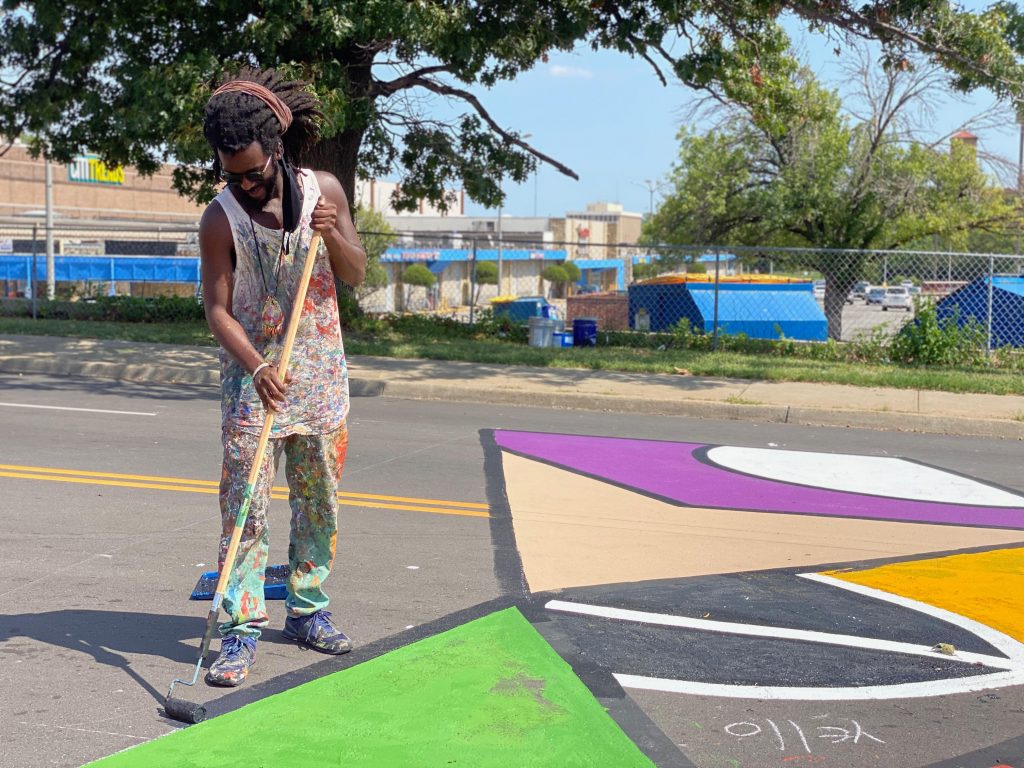
“Feedback was very positive—from thank you’s for doing this project to being very appreciative for the opportunity to participate in such a meaningful cause.” — artist Michael Toombs
“From the time I arrived until after completion, the atmosphere was so at ease. I kept saying the whole day ‘I’m so thankful’ because you could feel everyone that was there, wanted to be there.” — artist Avrion Jackson
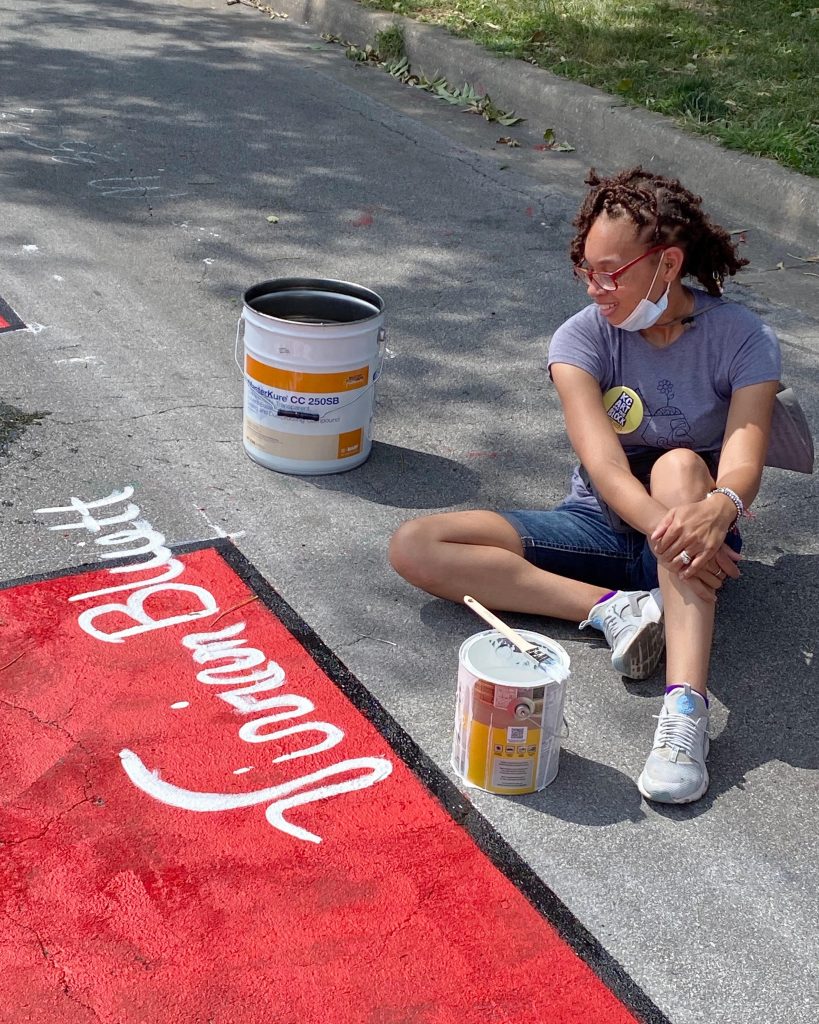
“One woman said though her tears, ‘I grew up in the South in the ’60s. I would have never thought I’d see the day. This is huge. It means a lot.’ Another woman who was also crying said, ‘It’s just too much. When will this stop?’ I didn’t have an answer for her. Her husband held her as she cried. They were looking at the “L” with the names of victims painted on it. Watching her cry was heartbreaking. Understanding exactly why she’s crying was even harder.” — artist Vivian Bluett
“I feel so honored by all of this. God is good.” — artist Harold Smith


